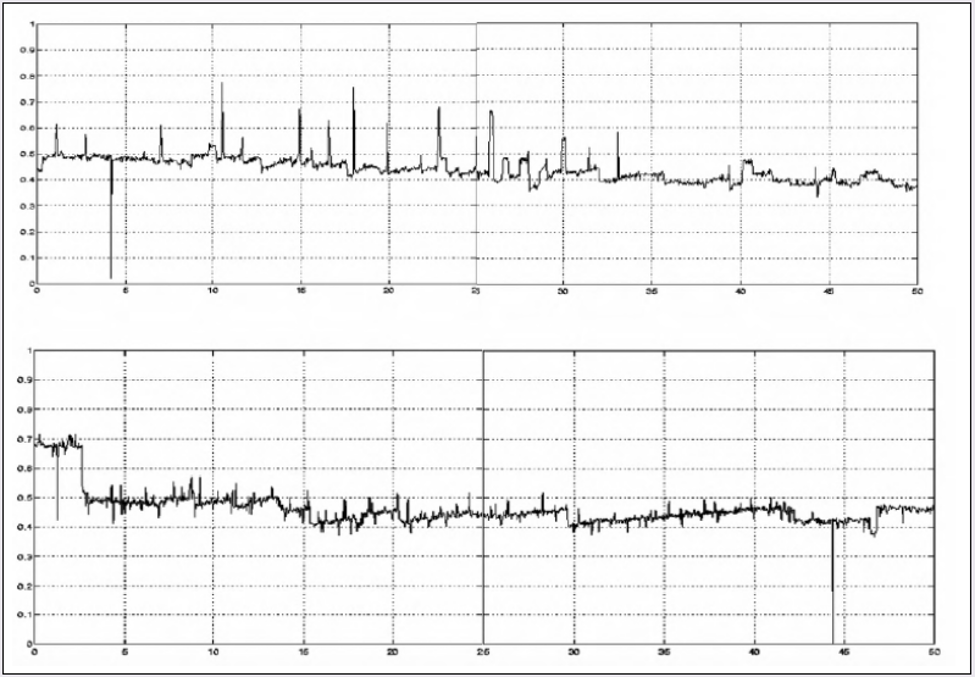Question
Serendipity! What is the correlation between magnetic field and nystagmus?
Answer
In these few lines I would like to tell what happened to me to highlight a phenomenon that in recent years is attracting more and more interest: the existence of a form of nystagmus induced by a magnetic field.
In the summer of 2007, I decided to perform a functional MRI (1.5 T) on a group of healthy subjects (including myself) during a very short pulses of monoaural irrigation with cold water and on-line registration of the nystagmus in order to evaluate the event-related functional MRI responses, their spatial layout and the temporal dynamics of the activated cortical and subcortical regions in time-locking with the instant of injection. The research yielded interesting results1. Indeed, for the first time, the temporal envelope of eye movement traces was not found to be significantly correlated with the blood-oxygen-level-dependent (BOLD) response on a time point basis. We attributed this phenomenon to various mechanisms, one of which would have become extremely interesting, although it would have gone almost unnoticed in this work. In fact, we wrote: “The identification of the very same time instant of nystagmus initiation on the traces was made problematic by the existence of spontaneous nystagmus activity preceding the injection, which could be related to the spontaneous vestibular stimulation recently described as a consequence of the exposure to strong magnetic fields in the MRI environment”2,3. I found that all subjects developed a robust horizontal nystagmus directed to the left while simply lying in the static magnetic field of an MRI machine, which persisted for the entire permanence in the magnetic field and disappeared as soon as one moved away from it (Figure 1). For the first time, magnetic field induced nystagmus was highlighted and described. Even though I never published further confirmations, three years later I decided to talk about this “discovery” with David Samuel Zee and Daniele Nuti. A week later, David Samuel Zee, at the Kennedy-Krieger Institute at Johns Hopkins University in Baltimore, confirmed the existence of a magnetic field induced nystagmus and, a few months later, a paper was published which explained its characteristics and genesis in detail4. Over the years, numerous other works have been published on this topic, with obvious repercussions ranging from the pathophysiology of the vestibular system to occupational medicine and possible therapeutic applications5-10.

Figure. 1. Left-beating nystagmus recorded in two subjects within the magnetic field.
References
- Marcelli V, Esposito F, Aragri A. Spatio-temporal pattern of vestibular information processing after brief caloric stimulation. Eur J Radiol. 2009; 70:312-316.
- Mian OS, Li Y, Antunes A. On the vertigo due to static magnetic fields. PLoS One. 2013; 8:E78748.
- Glover P. Magnetic field-induced vertigo in the MRI environment. Curr Radiol Rep. 2015; 3:29.
- Roberts DC, Marcelli V, Gillen JS. MRI magnetic field stimulates rotational sensors of the brain. Curr Biol. 2011; 21:1635-1640.
- Ward BK, Roberts DC, Della Santina CC. Magnetic vestibular stimulation in subjects with unilateral labyrinthine disorders. Front Neurol. 2014; 5:28. I
- Ward BK, Roberts DC, Della Santina CC. Vestibular stimulation by magnetic fields. Ann N Y Acad Sci. 2015; 1343:69-79.
- Mian OS, Glover PM, Day BL. Reconciling magnetically induced vertigo and nystagmus. Front Neurol. 2015; 6:201.
- Boegle R, Stephan T, Ertl M. Magnetic vestibular stimulation modulates default mode network fluctuations. Neuroimage. 2016; 127:409-421.
- Ward BK, Roberts DC, Otero-Millan J. A decade of magnetic vestibular stimulation: from serendipity to physics to the clinic. J Neurophysiol. 2019; 121:2013-2019.
- Go CC, Taskin HO, Ahmadi SA. Persistent horizontal and vertical, MR-induced nystagmus in resting state Human Connectome Project data. Neuroimage. 2022; 255:119170.
For more information, visit Inventis website https://www.inventis.it/en-na.

